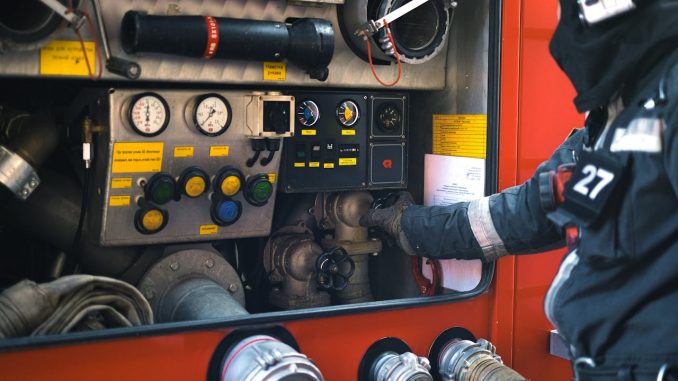
When it comes to fluid control in pipelines, valves play a crucial role in managing flow, pressure, and isolation. Two of the most commonly used valve types are butterfly valves and ball valves. Both are designed to control the flow of liquids, gases, or steam, but they operate in fundamentally different ways. Understanding the differences between butterfly valves and ball valves can help in selecting the best option for specific applications.
In this article, we’ll compare the two valve types in terms of design, function, advantages, and common applications.
What is a Butterfly Valve?
A butterfly valve is a quarter-turn valve that uses a disc as the closing mechanism. When the valve is fully open, the disc is rotated 90 degrees to allow fluid to pass through. To close the valve, the disc is rotated back to block the flow. The valve gets its name from the way the disc moves, resembling a butterfly’s wings.
Butterfly valves are lightweight, compact, and designed for efficient flow control. They can be operated manually using a handle or automatically through pneumatic, electric, or hydraulic actuators.
Advantages of Butterfly Valves:
- Compact and Lightweight: Butterfly valves are smaller and lighter than many other valve types, making them easier to install and requiring less space.
- Fast Operation: These valves operate with a simple quarter-turn, allowing for quick opening and closing.
- Cost-Effective: Butterfly valves are generally more affordable, especially in large diameters, due to their simpler design.
- Wide Range of Applications: Butterfly valves can handle various liquids, gases, and even slurry. They are often used in water treatment, HVAC systems, and food processing.
Limitations of Butterfly Valves:
- Less Effective for Tight Sealing: While butterfly valves provide adequate sealing for many applications, they may not be as leak-proof as other valve types, particularly in high-pressure systems.
- Flow Obstruction: The disc remains in the flow path even when fully open, which can cause slight flow resistance, making butterfly valves less suitable for applications requiring completely unobstructed flow.
What is a Ball Valve?
A ball valve is also a quarter-turn valve, but instead of a disc, it uses a spherical ball with a hole drilled through it. When the valve is open, the hole in the ball aligns with the pipeline, allowing fluid to pass through. To close the valve, the ball is rotated 90 degrees, blocking the flow.
Ball valves are known for providing excellent sealing and can be used for on/off control in both low- and high-pressure applications. Like butterfly valves, ball valves can be operated manually or through automatic actuators.
Advantages of Ball Valves:
- Excellent Sealing: Ball valves are highly effective at providing a tight seal, even in high-pressure and high-temperature applications.
- Minimal Flow Resistance: When fully open, the ball valve offers minimal obstruction to the flow, allowing for maximum flow efficiency.
- Durable and Long-Lasting: Ball valves are built to handle more demanding conditions, including corrosive materials and high pressures, making them more durable over time.
Limitations of Ball Valves:
- Larger and Heavier: Ball valves are generally bulkier and heavier than butterfly valves, making them more difficult to install in tight spaces.
- More Expensive: Ball valves, especially in larger sizes, tend to be more expensive than butterfly valves, both in terms of initial cost and maintenance.
- Slower Operation: While still a quarter-turn valve, ball valves tend to be slower to operate, especially in larger sizes, compared to the lightweight butterfly valve.
Key Differences Between Butterfly Valves and Ball Valves
1. Design and Mechanism
- Butterfly Valve: The butterfly valve has a rotating disc that controls the flow. The disc remains within the flow path even when fully open, which may cause some flow disruption.
- Ball Valve: The ball valve uses a spherical ball with a hole through its center. When the valve is open, the hole aligns with the pipe, allowing an uninterrupted flow with minimal resistance.
2. Size and Space Requirements
- Butterfly Valve: Typically more compact, butterfly valves are better suited for installations where space is limited.
- Ball Valve: Ball valves are larger and heavier, particularly in higher pressure or larger diameter applications, making them more difficult to install in tight spaces.
3. Sealing Ability
- Butterfly Valve: While butterfly valves can seal adequately for most applications, they are generally not as leak-proof as ball valves in high-pressure environments.
- Ball Valve: Ball valves provide superior sealing and are better suited for applications requiring a completely leak-proof system.
4. Cost
- Butterfly Valve: Generally more cost-effective, especially for larger diameters.
- Ball Valve: Typically more expensive, particularly in larger sizes and high-pressure applications.
5. Flow Control
- Butterfly Valve: Offers less precise flow control due to the disc in the flow path, but it’s effective for on/off applications.
- Ball Valve: Provides full, unobstructed flow when open and can offer more precise control, especially in high-pressure environments.
Which Valve is Best for Your Application?
The choice between a butterfly valve and a ball valve depends on the specific needs of your system. Here are a few considerations:
- For tight spaces or where weight is a concern, butterfly valves are the preferred option.
- For applications requiring a completely tight seal, especially in high-pressure environments, ball valves are better suited.
- Cost-conscious projects, especially those involving large pipes, may benefit from the lower cost and lighter weight of butterfly valves.
- For high flow efficiency and minimal resistance, ball valves offer superior performance.
Conclusion
Both butterfly valves and ball valves have their place in fluid control systems, and the best option depends on factors like size, sealing requirements, cost, and flow control needs. Butterfly valves are ideal for lightweight, cost-effective solutions with simple on/off control, while ball valves are favored for their durability, superior sealing, and ability to handle high-pressure situations. Understanding these differences will help you make an informed decision for your specific application.

Leave a Reply